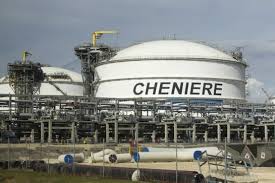
A week after Cheniere Energy opened its Midship gas line in Oklahoma’s STACK play, the company finds itself like a lot of others wondering what to do with excesses of natural gas as demand dwindles in the world’s biggest buyers of liquefied natural gas.
Asia’s spot prices are at record lows and some suppliers are forced to cut output. The Midship line carries natural gas from Oklahoma’s oilfields south to the State line where it eventually is moved to Cheniere’s Gulf Coast LNG operations.
Cheniere Energy is the largest U.S. LNG processor and commented in its first-quarter earnings report it has “recently experienced an increase in the number of LNG cargoes for which our customers have notified us they will not take delivery.”
Cheniere also said it expects new project investment worldwide to slump this year and next due to a 30% drop in world energy demand.
Economies worldwide have ground to a halt as coronavirus containment measures have taken their toll, slashing gas demand for power generation, heating, cooking, vehicles and chemical manufacture. The world’s biggest LNG markets – Japan, China, South Korea and India – are all seeing a drop in demand.
Asia’s spot LNG prices dropped to $1.85 per million British thermal units (mmBtu) last week, the lowest ever, as cargoes have flooded the market according to Reuters.
“At prices in the $2/mmBtu range … some producers are getting close to not recovering cash costs of their operations. We are likely to see some producers start to ‘shut in’,” said Alex Dewar, senior manager at the centre for energy impact at Boston Consulting Group.
LNG production in the United States is at the high end of the typical cost curve at about $4 per mmBtu, including shipping, according to analysts from consultancy Bernstein.
“Already we have seen U.S. liquefaction capacity utilization fall, and some cargoes rejected,” BCG’s Dewar said.
Gas intake at U.S. LNG plants fell to 8.1 billion cubic feet a day (bcfd) in April, just below total nameplate capacity but down from a high of 8.7 bcfd in February, according to data from Refinitiv. U.S. plants typically take in more than their stated capacities because gas is also used to run the facilities.
Processors Freeport LNG and Kinder Morgan declined to comment on the operations of their customers, who pay U.S. plant operators to process natural gas into LNG for export.
Indications are that U.S. LNG exports are falling beyond what is expected from the end of winter, and that demand loss could continue through the summer. Buyers in Asia and Europe have cancelled around 20 cargoes for loading in June.
This week, U.S. natural gas prices topped benchmarks in both Europe and Asia for the first time ever, giving LNG buyers another reason to cancel cargoes.
On Wednesday, natural gas prices were down 19 cents or 9% and finished the day at $1.98 per Million Btu in trading on the New York Mercantile Exchange.
Source: Reuters





